A major retrospective of the work of Fernando Botero (1932) is on show at the Kunsthal in Rotterdam, entitled Botero: Celebrate Life! The rush of opening such an exhibition takes energy out of him, but strangely enough painting never exhausts him, he says in his studio in Monaco. 'I have never experienced anything more fulfilling than painting or sculpting. Painting takes you out of everyday reality. You forget your body - even your existence. It's intense, but while painting I don't feel any fatigue, even after working for seven or eight hours. Whereas at a cocktail party I'm exhausted after only half an hour.'
He hopes to give visitors to Kunsthal Rotterdam something of that same feeling: 'That people can dwell in another reality for a very short time and transcend their daily circumstances.'
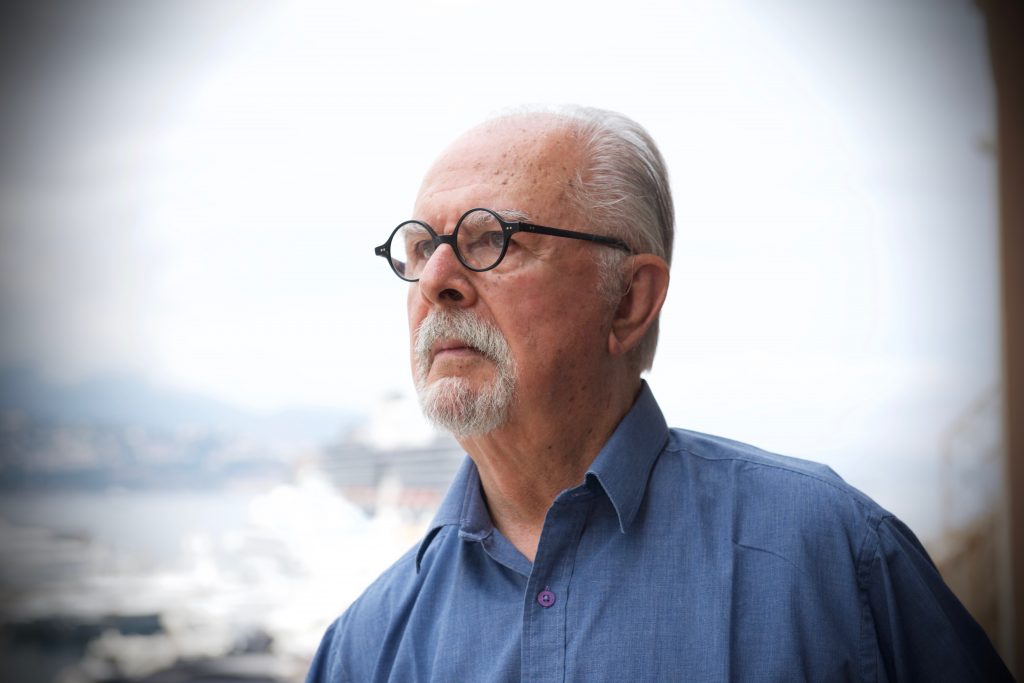
As a young boy, the Colombian artist actually wanted to be a matador, but he was more talented at painting bulls than fighting them. Botero sold his first painting at ticket sales for bullfighting. At 19, he already had his first solo exhibition. After professional training in Madrid, he travelled around Europe and eventually settled in Paris. Fernando Botero grew to become one of the most successful and highest-paid artists in the world; his work can be seen in museums around the world and his large sculptures adorn the streets of New York, Barcelona, Madrid, Jerusalem and Medellín, among others. In 2000, he donated much of his collection of his own work and of his rich art collection (including works by famous artists such as Picasso, Dalí and Miró) to major museums in Bogota and in Medellín.
Functional
But successful or not, resting on his laurels is definitely not one of them. The modest and gentle man, now 84, is still as passionate as the adolescent who painted bullfights. Despite his advanced age, not a day goes by that he does not paint or sculpt. Botero is still gripped by form and colour. He does not understand why people can find art insignificant. 'This, for instance, is also art,' he says, taking a hexagonal plastic cup from the table and holding it up to the light. 'It's not just purely functional, someone has thought about making something beautiful out of it. Almost everything around us is art.'
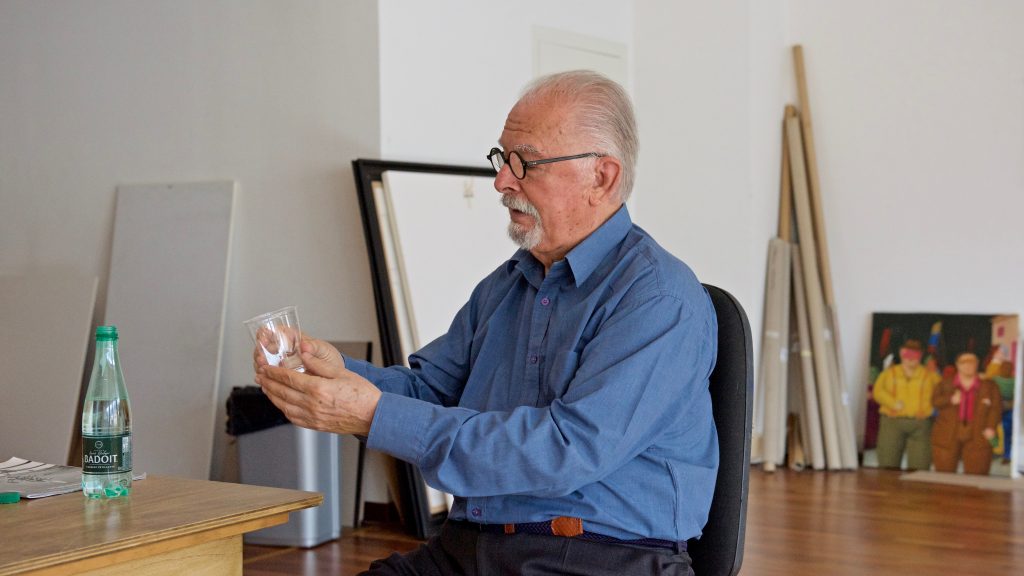
Anyone who has ever seen a Botero will never forget it; his style is recognisable from thousands. Everything the Colombian artist paints or sculpts - be it a woman, a man or a horse - is enormous. The almost absurdist magnification of his figures, and the playfulness and humour in his work make Botero: Celebrate Life! fun for young and old.
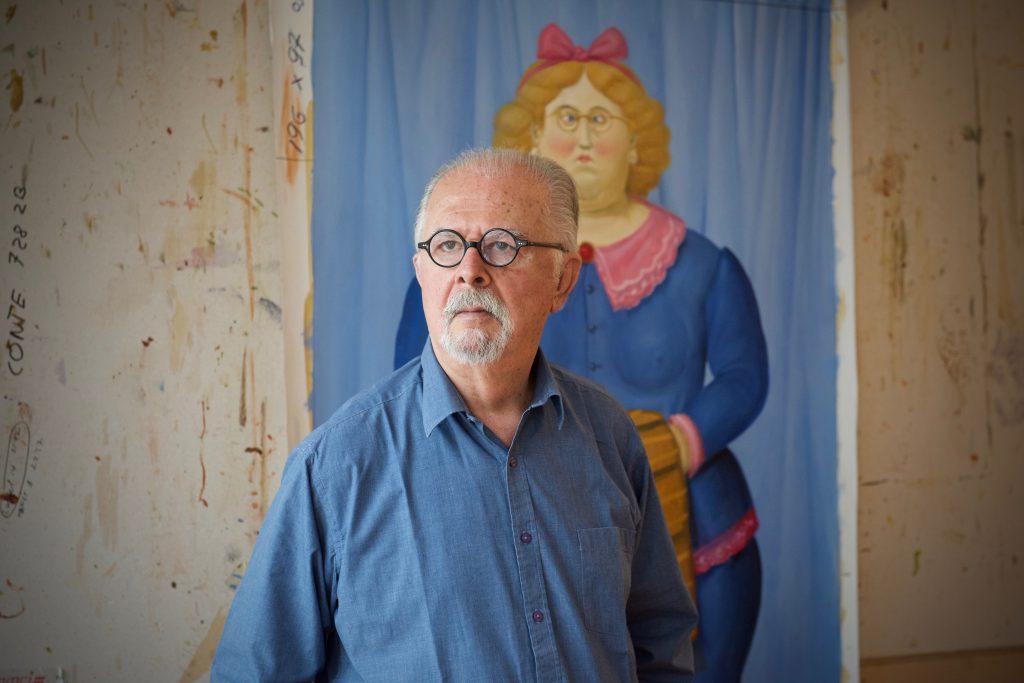
With his rich forms, Botero aims to express lust for life and sensuality. But although his work is colourful and often funny, Botero's universe is definitely not just frivolous. The canvases from the Circus series, for instance, or his beautiful, refined drawings, some of which are also on display at the Kunsthal, are also moving.
Executions
Botero painted lawyers and prostitutes, presidents and cardinals, clerks and soldiers, policemen, men and women, young and old, rich and poor. Much of his work is socially critical. If you look closely, you will often detect tragic undertones even in the apparently cheerful works. How could it be otherwise, for someone born and raised in a country like Colombia, where civil war, political murders, crime and kidnappings are the order of the day. How much this reality concerned him can be seen in the numerous paintings with political subjects. He made canvases of arrests, executions and weeping relatives, such as The widow and 20.15: massacre.
Moreover, his social commitment is not limited to his own country of origin, as he showed in a recent series of impressive, explicit paintings on the torture of prisoners at Abu Graib prison, which he donated to the University of California at Berkeley.
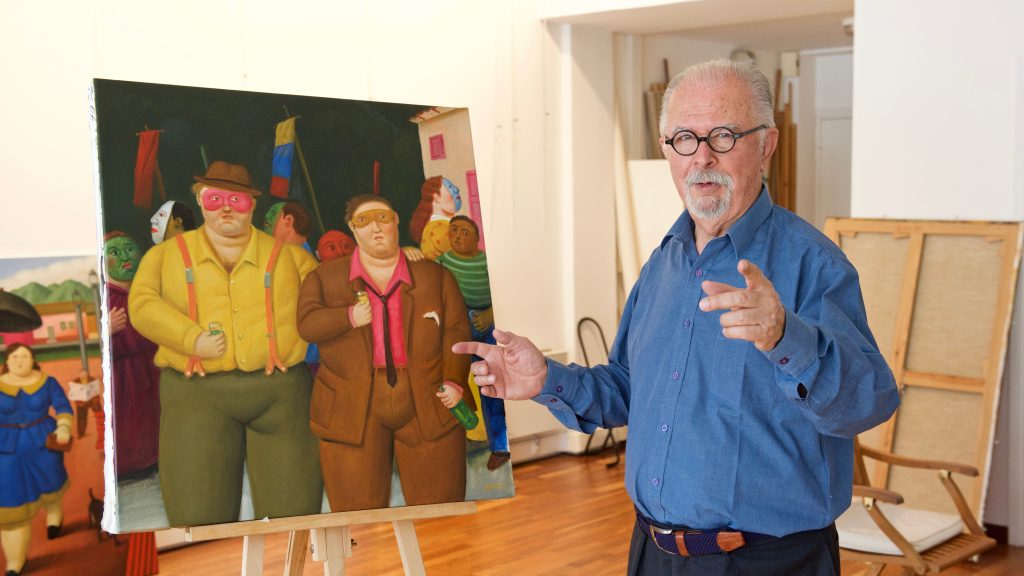
Carnival
Botero looks out through the high windows of his studio onto the harbour of Monte Carlo, where the imposing yachts lie gleaming in the morning sun. He points to the busy road around it: now a lane for city traffic, but most recently the circuit for the Monaco Formula 1 race, where our own Max Verstappen crashed into the crash barrier. 'The noise is deafening,' he laughs. 'They're over in seconds.'
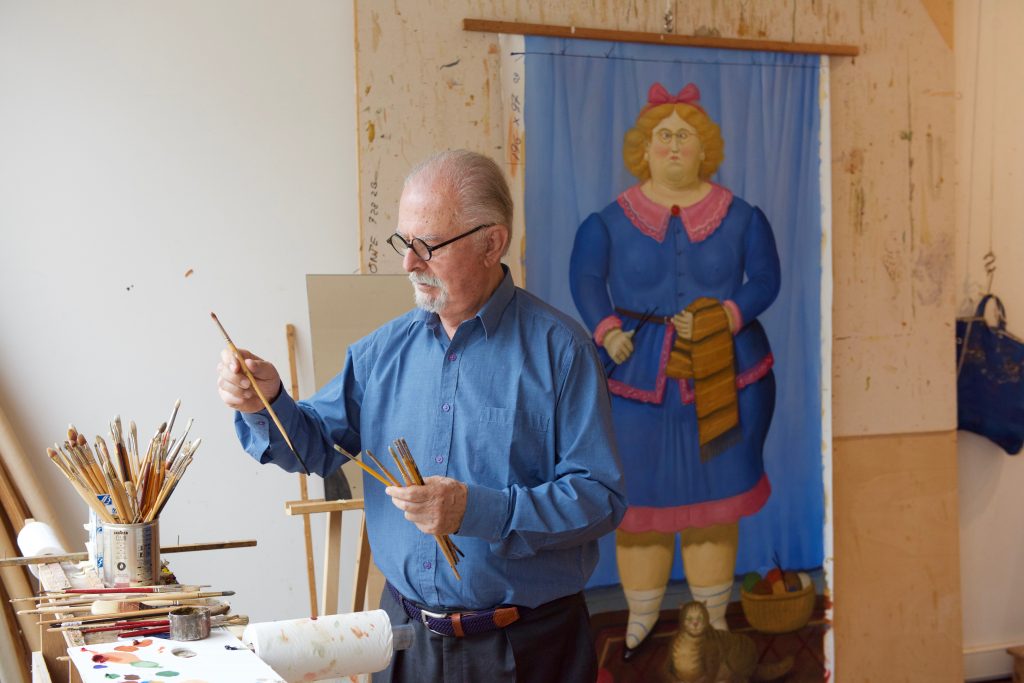
But when there are no speeders driving through town, this is where the artist prefers to work - although he also has studios in Paris, Colombia, Greece and Pietrasanta, Italy, the place where he creates his sculptures. In the bright space, canvases stand or hang here and there on the wall; some already finished, others waiting to be revised.
He has just completed the colourful Carnival completed, showing two masked men. 'It started with an image of two men drinking. Then I thought: why don't I give them a mask? Later, people were added in the background. Suddenly it was a painting about carnival. That's how a painting comes to you slowly. And sometimes a subject grows into an obsession and a series follows from that.'
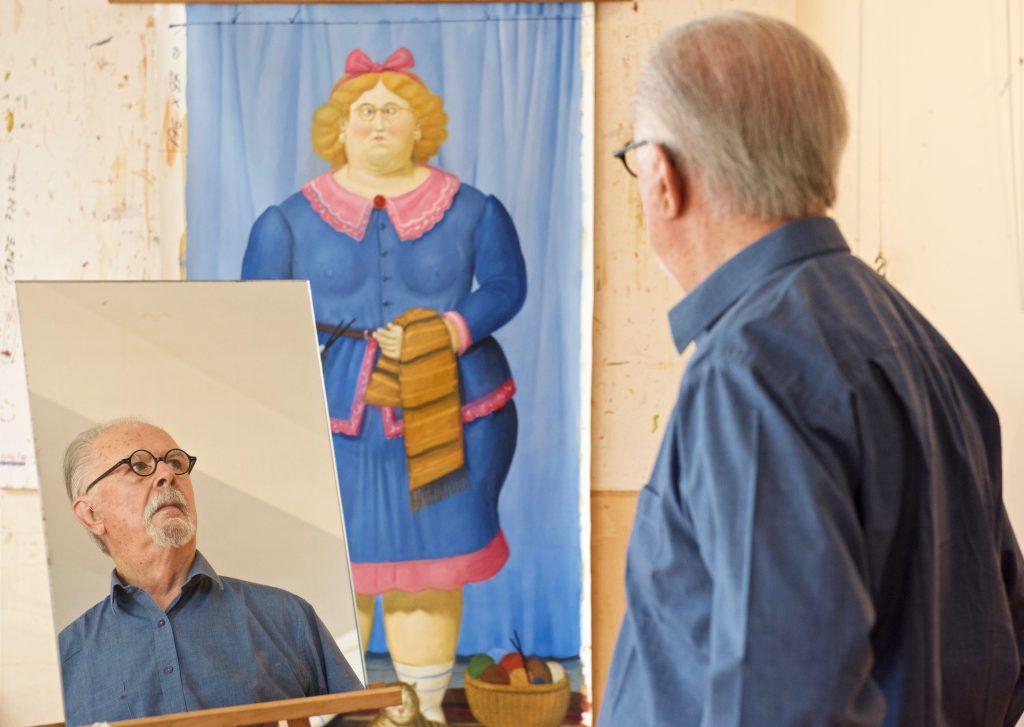
He always works on several canvases at once. 'I throw the first layer on quickly, because it has to dry for a month before I can paint over it. Then I start looking, changing, adjusting. What is good and what is not yet? What should be taken out, what should be added? That takes time. I use mirrors to detect mistakes; alternately I look at the canvas and the mirror image, and that way I see what is lacking. A method from the Renaissance. Just as a writer edits his work, I edit my paintings.'
Corrections
To this day, this is how he tries to perfect his craftsmanship. Even after nearly 70 years, it is still sometimes a toil. 'Look,' he says, turning over another frame. A Mona Lisa-like lady in a red dress sits on a chair, a blonde poodle on her lap. Botero points to a few spots on the canvas, where he has clearly been fiddling. 'Most paintings I work on once or three times, so I finish those after a few months. But some take me years, like this one. I made so many corrections on it, but look, they shimmer through. I just can't get it right.'

Behind the lady in red is an oblong linen with a squinty woman in blue-pink suit. A very different image, except for one detail that is the same on every canvas: the tight mouth. Even in the cheerful paintings, no one is ever smiling. Botero: 'I have always liked Egyptian art, where the figures depicted have no expression on their faces. They are neither sad nor happy - they merely exist. You see the same thing in the paintings of Piero della Francesca or Paul Cézanne, for example. A strong expression on a face demands all the attention. The absence of a state of mind gives the person depicted eternal value.'
Signature
Through the volume, his use of colour, the mood and expression of the characters, all his canvases clearly bear his signature - whether he is painting circus figures, still lifes or priests, or paying homage to one of the painters he admires, such as Van Gogh, Van Eyck or Piero della Francesca. Many contemporary artists want to do something different all the time and reject a defined style, Botero says, but he himself does not believe in this. 'Look at the people we consider great artists: they all have a recognisable style. A Botticelli you recognise as a Botticelli. A Rembrandt is a Rembrandt. A distinctive style forms your identity. That's your signature.'
Botero: Celebrate Life!, until Sunday 11 September, Kunsthal Rotterdam.
Around Botero: Celebrate Life! there are Latin Life Sundays every Sunday from 2pm, with music, dance, Latin American food, cocktails, circus and more. The kick-off is on Sunday 3 July with Maite Hontelé and a salsa watch-and-dance event. See also www.kunsthal.nl/latinlife
The Botero exhibition is part of Rotterdam Xpanded, a multidisciplinary collaboration between Kunsthal Rotterdam, Museum Boijmans Van Beuningen and IFFR, this summer in and around Museumpark.
